#polygonal structure
Explore tagged Tumblr posts
Text

Cool!!!
1 note
·
View note
Text




DRG loot bug plush I made for @beau-lion !
Scale's hard to tell here but it's ~2ft in length, weighted, and made of fleece :]
#deep rock galactic#occuart#art#plushies#sewing#fanart#this was a tough one to pattern!#loot bugs are so lumpy but also have the polygonal buggy structure#bugs#he asked to post it to the drg reddit and ppl there seem to like it!#rock and stone
127 notes
·
View notes
Text

Jim Isermann (American, b. 1955, lives and works in Palm Springs, CA.), Untitled (2,2,2), 2019. Acrylic paint on canvas over aluminum panel, 48 x 48 x 1 1/2 in. | 121.9 x 121.9 x 3.8 cm. (Source: Pacific Design Center Design Gallery, Los Angeles, CA.)
#Jim Isermann#art#contemporary art#21st century art#abstract art#abstraction#geometric abstraction#American art#American artist#polygonal structures
22 notes
·
View notes
Text
Mgs1 ocelot is still my fave ocelot design probably… cunty old cowboy
#i love it sm#i seriously give major props to mgs3 and mgsv ocelot bc like.#in his face structure you can tell he is his parents kid and i really like that#but yeah i love my polygonal old cowboy
14 notes
·
View notes
Text
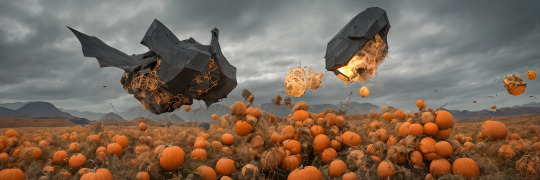
Autumn_645136305946426
#pumpkin#halloween#autumn#landscape#experimental#design#minerals#blocks#polygons#geometry#photography#structure#art#graphics#contemporaryart#digital art#generative art#ai#tech#technology#stable diffusion
1 note
·
View note
Text
Supernatural and the Concept of Grace
Hi! It's your friendly neighborhood Media Mime and I'm here with a wall of text about my insane thoughts on how Angels work.
From the TV show Supernatural.
I don't know what I'm doing with my life.
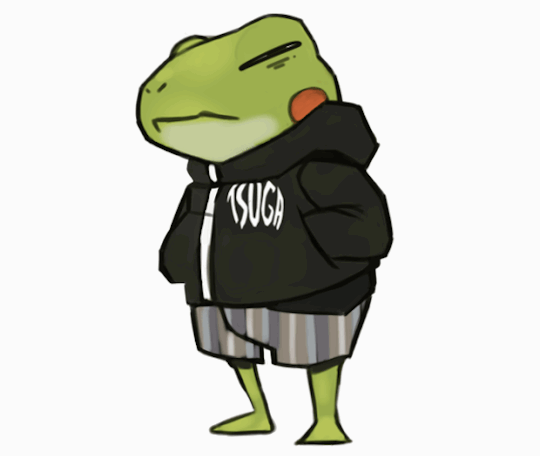
---
These are headcanons, mind you, so they aren’t supported by the show. I just think way too much about stuff like this.
This all stems from how beings from a different plane of existence would be borderline incomprehensible to humans. The whole, true form and voice not being viewable/hearable led to me thinking about them in more abstract forms.
I’m going to give you some weird background stuff below, but feel free to skip to the end if you’re just here for the Grace mechanics and things.
*Edit: Making the lil click more bar because I realized I never did this and the Post Is Too Long.
---
My day job is as a Math Adjunct, so you can imagine I have a bit of a fixation on recurring principles, formulas, geometry, and so on.
It’s my jam.
Specifically, I have a focus on Mathematics in Nature. It's fascinating to me that we see the same shapes and patterns recurring over and over again in all natural formations.
I want to stress that to get into this kind of thing, you don’t actually need a background in Math. There are several resources online that provide examples and visual guides to this field of study. I’ve provided a visual guide below of some of my favorite phenomena as well as a basic (very basic) explanation of the principle.
I ain’t getting paid for this right now, so you get what you get!
---
Now is also a time to mention that I took some psychedelics in my 20s that made me See Some Shit. This is not meant to be inspirational. I just think I should mention it because you see a lot of Stuff on them, not always Stuff you want to see. You can look up information about psychedelic geometry and skip the hassle of ingesting things you probably shouldn’t.
Don’t do drugs kids, or whatever.
---
The Fibonacci Sequence is where numbers ascend by adding the two previous numbers to itself. This plays a key role in something known as the Golden Spiral. For a very basic explanation, you take a square and draw an arc from one corner to the next and repeat with bigger and bigger squares.
1,
1 + 1 = 2,
1 + 2 = 3,
2 + 3 = 5,
3 + 5 = 8,
5 + 8 = 13,
and so on.
The curve itself is seen in the way plants grow, shells form, and weather formations to name a few.
(The following are not my images, but they are readily available online. )

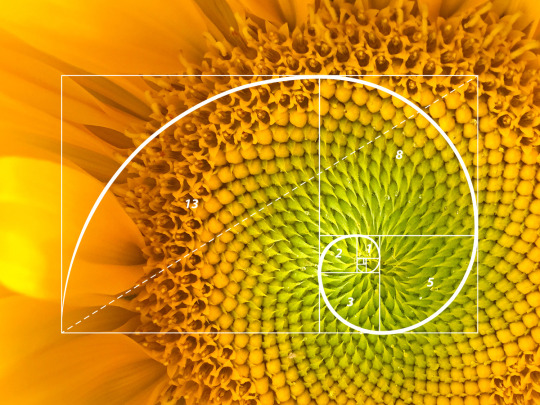
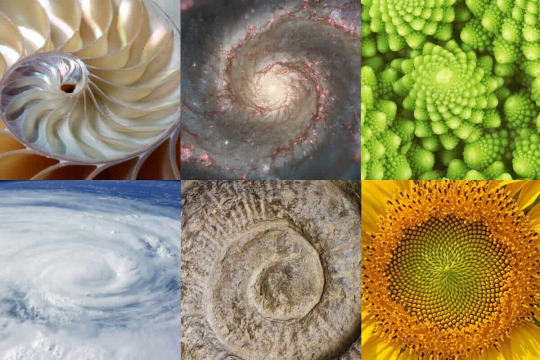
---
Tessellations are repetitive polygons (shapes with 3 or more connecting lines, think triangles, squares, hexagons) that form together, without gaps.
In nature, the real world, there are examples of malformations, but Math is an explanation of the ideal principle.
We can see these structures in scales, honeycombs, and so on.



---
Fractals are where we see the same pattern repeat at smaller and smaller forms of itself.
There is a lot of overlap of this with the Fibonacci Sequence (these patterns often appear INSIDE of the spiral), but it is its own concept.
Fun fact, fractals play a significant role in Chaos Theory, which I will not get into here because we would be here all day.
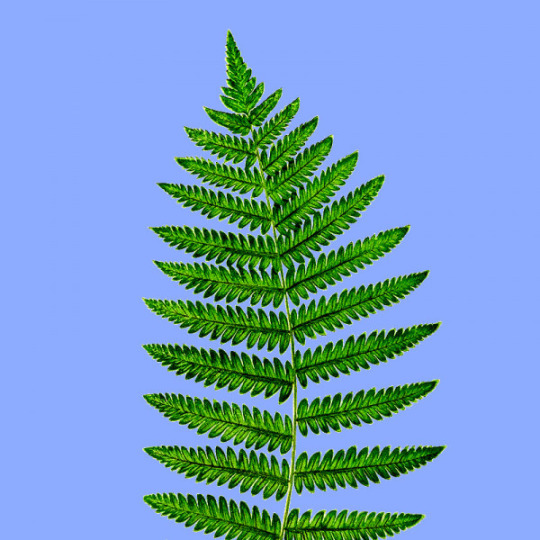

---
Anyway!
Sorry!
Carried away there.
Back to Supernatural (what an insane transition) and how this wraps into my concept of Grace.
---
Angels are filled with this kind of naturally occurring phenomena, a sort of endless collection of patterns. They are essentially manifestations of this idea or at least they process the physical world in this way.
Castiel mentioned eating molecules ONE TIME and well, I ran with it.
---
A couple of examples I feel strongly about, using Castiel as an easier point of entry than say, Lucifer or Gabriel:
Angels think in a series of sensations, like a form of Synesthesia. Synesthesia is a concept explored in both psychology and cognitive neuroscience where people express the feeling of multiple senses activating at once. So for instance, the words might leave you with an impression of color or sounds may give you a physical sensation. I think Angels can, and do, adopt a more human perspective the longer they interact in the physical world. This is especially relevant during the time they are essentially made human, but I think the way they interpret information remains abstract. Just a fun fact, if you have Autonomous Sensory Meridian Response (which is usually shortened to ASMR), you have a higher chance, according to some studies, of having a form of Synesthesia.
---
Angels also think in patterns. For Castiel, in the beginning: His thoughts are very vibrant. Primary colors denote curiosity. The structure of those thoughts are very rigid. He thinks more in straight lines rather than curves. The movement of the thoughts is calculated and repetitive. Learning something for the first time is difficult, so splitting it into individual pieces is easier to comprehend. This is where we get The Face from, you know the one. He perceives things in his own way which makes him socially awkward in human form. As he gets more familiar with the physical world, and the boys in general, his perspective shifts. He has more robust colors dedicated to the people or objects he interacts with and they shift around easier. His thoughts are less linear and more curved and organic. He has less set structure because he isn’t learning as much anymore, he has an understanding he can build off of and make more defined to himself. Learning to love humanity requires flexibility that doesn’t come naturally to Angels, so he actively works at it.
Seeing souls is easier than interpreting the actual look of people. This is a doozy, but we will take Dean as an example because I’m Destiel/Deancas pilled. To Castiel, Dean looks the way he looks, smells the way he smells, sounds the way he sounds, and so on in physical form. Castiel learns to interpret him in that way as the series goes on, but his soul, the essence of him, has its own set of sensations. The following are not literal, although I’m sure some would translate that way. He sounds like a crackle of fire and a low drum. His colors are darker oranges and blues and greens. He feels like a soft rain and sun on a warm day. He tastes of barrel aged liquor and smoke. He smells like a hearth and earth after it rains. He feels like every aspect of the impala, from the cold metal to the supple warm leather. Obviously some of these senses shift and change from time to time, but that forms the basis of what Castiel recognizes as Dean.
---
Grace is at least partially visible to other angels and partially felt by humans. Other angels can see each other in their vessels. So they have a concept of what they look like in their true forms, despite being hidden inside of something. This implies they can experience similar sensations as the other angels they look at, although I don’t like the idea that they can see their “thoughts” necessarily. I would imagine they can “feel” a sudden intense set of emotions/sensations from another angel however, in the way that humans can tell someone’s emotions through facial expression or tone of voice.
---
Humans can learn to experience angels, albeit in a form that is easier for them to comprehend. Dean doesn’t experience anything special about Castiel when they first meet, outside of the generic information we get about Angels and the obvious senses he can use: seeing, hearing, smelling, (gods I wish tasting was on this list but! Alas!) As Dean gets closer with him, he can start to “hear” him. I like to think he sounds like a pleasant hum or a slight ringing, similar to a wind chime, depending on his mood. Dean, specifically, makes him hum lower than usual. If he were to hum out-loud, it would harmonize with the way his grace sounds. It takes longer to perceive colors, but I think Dean would see the little flashes of blue, similar to the way Castiel’s eyes get when he’s using his powers. This is why I typically put a little blue squiggle between them when I draw them together. Plus other senses, sorry but this is long enough as it is. You likely get the point by now!
---
Anyway, I’m very happy that literally anyone has even a passing interest in my interpretation of these things.
Formatting this was a nightmare and I feel particularly insane today.
#supernatural#spn#my stupid little frog brain#more of my abstract thoughts on grace#spn headcanon#somehow it all comes back to math#if anything enjoy the pretty pictures of nature#yes i’m mentally ill what gave it away#castiel#supernatural angels#sorry for posting like its the 2010s
125 notes
·
View notes
Text
Origins of Salt Polygons

Around the world, dry salt lakes are crisscrossed by thousands of meter-wide salt polygons. Although they resemble crack patterns, these structures are actually the result of convection occurring in the salty groundwater beneath the soil. (Image credit: S. Liu, see also: Physics Today) Read the full article
266 notes
·
View notes
Text
The Platonic Solids

Tetrahedron, hexahedron (cube), octahedron, dodecahedron, and icosahedron-are central to sacred geometry and spiritually embody balance and symmetry. Each solid is linked to the classical elements- Earth, Air, Fire, Water, and Ether- highlighting the interconnectedness of the Universe. These shapes represent more than mere mathematical interest; they symbolize the fundamental principals that orchestrate the Universe. There are profound meanings attributed to the Platonic solids within sacred geometry and spirituality.
History And Origins
• Ancient Greece-The birthplace of the Platonic solids: The exploration of sacred geometry can be traced back to the influential mathematician Pythagoras (570-495BC). His school of thought laid the foundations for later philosophers to build upon. However, it was the renowned Greek philosopher Plato (427-347BC) who popularized the term "Platonic solids". Although he was not the first to study these shapes, his work was pivotal in their widespread recognition. In his masterpiece 'Timaeus', Plato assigned each soldid to one of the four classical elements, Fire (tetrahedron), Earth (hexahedron), Air (Octahedron), and Water (icosahedron). In later interpretations and writings the fifth Platonic solid, the dodecahedron, was associated with the element of Ether (also called Quintessence or Spirit).
• Euclid's Elements: One cannot discuss the history of Platonic solids without mentioning Euclid (~300BC), known as the Father of Geometry. His groundbreaking work 'Elements' outlined rigorous proofs for each solid shape's properties, forever cementing their place in mathematics. These expanded our knowledge of Platonic solids and helped establish a solid foundation in mathematics for future generations.
• Archimedes' Influence: Although not directly related to Platonic solids, Archimedes (~287-212BC) expanded upon their concepts by discovering thirteen semi-regular shapes known as the Archimedean solids. These are a collection of thirteen shapes which share certain characteristics with the Platonic solids. This work demonstrated that geometric principles extended beyond the five Platonic solids, further enriching our understanding of sacred geometry.

Unique Characteristics
The five Platonic solids have distinct characteristics that define them, making them the cornerstone of sacred geometry. The key defining features are:
• All faces are congruent regular polygons (equalateral triangles, squares, or pentagons).
• Each vertex (corner) connects and equal number of edges.
• They are symmetrical structures- rotation of reflection can interchange any two vertices.
These attributes result in only five possible shapes that meet these criteria: tetrahedron, hexahedron, octahedron, dodecahedron, and icosahedron. Each solid has its unique symbolism and spiritual significance that has been recognized across various cultures and ancient traditions.
The Tetrahedron
The tetrahedron, also known as a triangular pyramid, is the simplest of the Platonic solids. It represents embodying the principles of energy, passion, and transformation and the chaos of Fire.

• Geometric properties: The tetrahedron has four vertices, six edges, and four faces, all of which are equalateral triangles. It's the only Platonic solid that does not have parallel faces, giving it a sense of directionality and movement.
• Associated element: Fire
• Associated chakra: Solar Plexus
• Spiritual meaning: The tetrahedron is associated with personal power, creativity, and the drive for change. It symbolizes the dynamic and transformative nature of fire, representing the ability to purify, illuminate and transmute.
• Uses: The tetrahedron is used for focusing intentions, manifesting desires, facilitating personal transformation. It is also employed in meditation and energy work to enhance one's inner fire and to promote balance and harmony within the self.
The Hexahedron
The hexahedron, commonly known as a cube, represents the element of Earth in the Platonic solids. It symbolizes stability, solidity, and groundedness.

• Geometric properties: The hexahedron has eight vertices, twelve edges, and six faces, all of which are squares. Its equal sides and angles provide a sense of balance and symmetry.
• Associated element: Earth
• Associated chakra: Root
• Spiritual meaning: The hexahedron symbolizes stability, reliability, and the functional aspects of life. It is associated with the material world and a strong connection to to the earth.
• Uses: The hexahedron can be used for grounding, centering, and connecting to the physical realm. It is often employed in meditation to foster a sense of security and stability.
The Octahedron
The octahedron represents the element of air. It is associated with balance, communication, and intellectual pursuits.

• Geometric properties: The octahedron has six vertices, twelve edges, and eight faces, all of which are equalateral triangles. Its a dual polyhedron to the hexahedron, reflecting a balance between the physical and the mental.
• Associated element: Air
• Associated chakra: Heart, Throat
• Spiritual meaning: The octahedron symbolizes harmony, balance, and integration. It's associated with the breath of life and the floe of energy, representing mental clarity and intellectual growth.
• Uses: The octahedron is used to enhance communication, foster understanding, and promote a sense of harmony it is used in meditation to balance emotions and thoughts.
The Icosahedron
The icosahedron represents the element of Water. It symbolizes adaptability, flow, and emotional intelligence.

• Geometric properties: The icosahedron has twelve vertices, thirty edges, and twenty faces, all of which are equalateral triangles. Its many faces and edges give it a spherical appearance, suggesting fluidity and movement.
• Associated element: Water
• Associated chakra: Sacral
• Spiritual meaning: The icosahedron is associated with the flow of emotions, adaptability, and creativity. It symbolizes thr ever-changing nature of water and the ability to navigate through life's challenges with grace.
• Uses: The icosahedron is used to enhance emotional expression, activate sexuality, facilitate change, and promote connections. It's employed in meditation to connect with the fluid aspects of the self.
The Dodecahedron
The dodecahedron represents Ether, Spirit, or the Universe. It symbolizes the interconnectedness of all things and the mystery of the cosmos.

• Geometric properties: The dodecahedron has twenty vertices, thirty edges, and twelve faces, all of which are pentagons. Its complex shape suggests a connection to the divine and the unknown.
• Associated element: Ether(Spirit)
• Associated chakra: Third Eye, Crown
• Spiritual meaning: The dodecahedron is associated with the Universe, divine creation, and the interconnectedness of all beings. It symbolizes the mystery of existence and the exploring deeper levels of consciousness.
• Uses: The dodecahedron can be used to connect with the higher realms, enhance spiritual awareness, and promote a sense of unity. It is used in meditation to explore tge mysteries of the universe and the self.

#sacred geometry#platonic#Plato#magick#witch#esoteric#occultism#occulltism#occult#meditation#chaos#ancient greece#healing#astral#spiritual journey#spirit work#eclectic#pagan#witch community#witchblr#dark#witchcraft#lefthandpath#satanic witch#satanism#sacred#geometry#geometric
92 notes
·
View notes
Text
I’m downloading shapefiles (basically geographic files, in this case the polygons of every country) for a mapping project I’m doing and while most countries have an ISO code column in their file (which is a 2 letter abbreviation of their country name), Canada, the UK, and the US do not. The US doesn’t even have a country column, it just listed the states. Now these are official shapefiles made by the vendor of the software I’m using (Esri, which is one of if not the dominant global distributor of mapping software) and are treated as the authoritative copies. Like if you wanted to download the outline of the US and all its states you would download Esri’s copy of it. And the reason I noticed this discrepancy is because I’m trying to combine individual country files to a global world file and I first had to edit the US & UK & Canada shapefiles and manually add in their ISO codes so they would join the world file properly. Notably countries like Argentina already have country & ISO code embedded in its shapefile.
And what I’m taking away from this is that there is an epistemic assumption happening where western countries can stand alone - they do not need to be combined or compared with other countries, they are complete units that constitute their own global file. Their data lack an “international character,” they are not set up for comparison or combination with other country data. The assumption being made by excluding these (extraordinarily trivial and easy to include) datapoints is that the only reason you would be downloading shapefiles for the US or Canada is to study these countries in isolation, while countries in the Global South are structured to accommodate the act of comparison
#what was it quijano said. data have a colonial character. anyway yeah#book club#<- not really but whatevsies
285 notes
·
View notes
Note
Re: VIKTOR & ROLF Couture Fall/Winter 2024
I know fashion, especially couture, is meant to be an expressive and exploratory art. I think the exploration of geometry in fashion, silhouettes, and textures here is really neat! But I am unfamiliar with the designer - is there more to those pieces than meets the eye?
Sometimes there is less evident meaning in a collection to those who don't spend a lot of time and study in the industry. Where would you recommend going for more information on current collections?

If you remember these dresses from last year, Viktor & Rolf have been having a very interesting conversation about current fashion trends and the intersection of the cultural zeitgeist. Structuralism is big in fashion right now, arguably the biggest since Antoinette did her shit. A bunch of designers are fucking around with pushing the limits of what is possible to be worn on the body in a very literal sense, treating garments as almost like physics theorems to be solved. Textile sciences, 3d modeling, etc--it's all being used to make dresses that are more fiendishly complex than the last, than arguably we've ever been able to make.
And Viktor & Rolf specifically seem to be having a very purposeful dialogue of the absurdity of it in the face of what beauty standards are "supposed" to be, what high fashion is "supposed" to be. Their works have always relied heavily on pushing those boundaries and the current couture tech boom is just enabling a lot of their weirdness, which is absolutely fantastic to watch.
I would argue that their 2024 FW collection is specifically exploring what it means to be prioritizing those structuralist tendencies over the actual bodies they're being worn on. It's a conversation piece going back to the old hack question: "Who would ever want to wear this?". The harsh geometries make most of the collection entirely infeasible and impractical for actual wear. No celebrity is gonna want to sit at the Met wearing any of these. Their only value is...what, exactly? Where IS the value coming from? Why do we consider Viktor & Rolf as high fashion icons if the dresses they keep making seem to be actively infeasible for even their "intended" purpose as red carpet event shit? What happens to the fashion industry when the ability to make whatever you want no longer requires it to be intended to be worn, to be used a single time in that runway show and then shoved in an archive?
When couture maisons have to pump out hundreds of dresses every two months, when the world is burning down around us, when none of this matters--isn't it refreshing to see some absolutely buckwild shit on a runway? In a world where the spectacle is supposed to distract from the horror, it feels lately like Viktor & Rolf are specifically hamming up the absurdity of it all. They've watched the industry change from when they first started out into becoming something alien and unrecognizable. Fashion design demands Autocad and 3d printing and literally engineering in order to keep ahead of the pack--and in what is supposed to be an industry defined by the inherent humanity needed to design couture, perhaps these strange polygons are a sort of reckoning with that.
86 notes
·
View notes
Note
mr viktor what's your favorite number and why
If I had to choose, I think I would choose 3 due to its structure. It is the smallest number required to form a pattern. A line connects two points, but the addition of a third creates a shape. The triangle is the simplest, strongest polygon, the start of more complex structures. An entire branch of mathematics — trigonometry — is devoted to the stability, symmetry, and balance of the number three.
#arcane viktor#viktor arcane#askviktor#arcane roleplay#viktor league of legends#viktor lol#arcane#viktor#arcane rp#ask viktor#viktor rp arcane#viktor rp blog#viktor roleplay#viktor rp#viktor arcane roleplay#viktor arcane rp#arcane rp blog#arcane ask blog#arcane league of legends#arcane lol
25 notes
·
View notes
Text

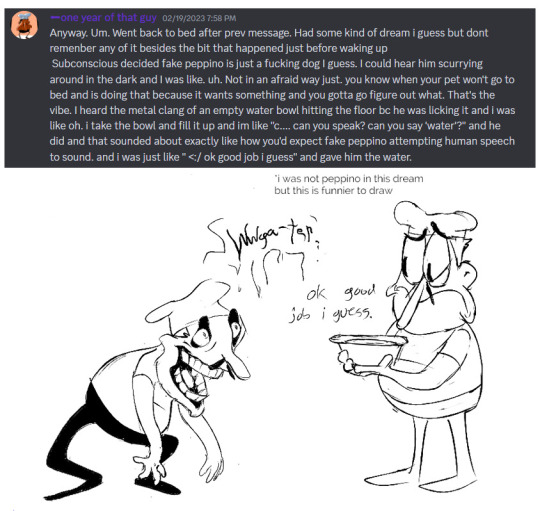
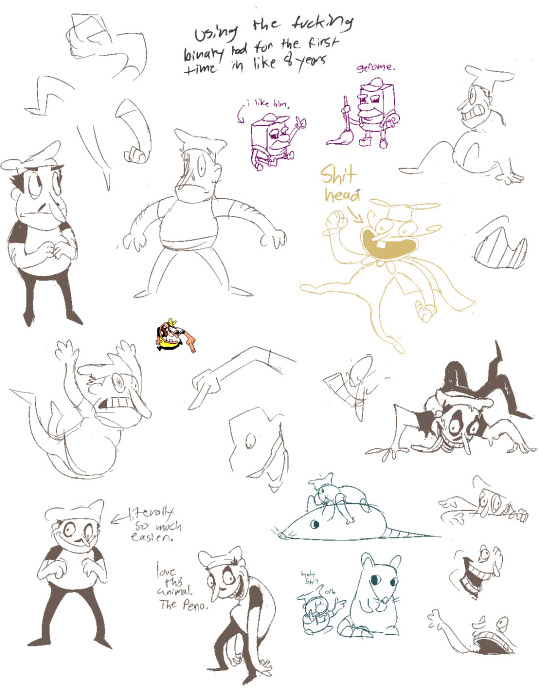
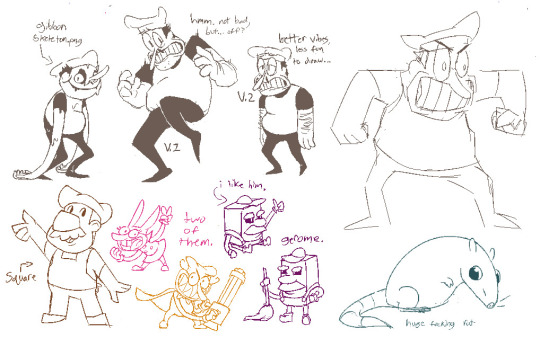

a year!!! as of today i have now been drawing these funny little pizza freaks, to the exclusion of almost everything else, for!!! an entire year!!! i wanted to do a nice group shot/lineup of everybody to compare to when i first started trying to draw them because oh boy were they bad. i never even posted most of them anywhere because they were so bad. but im posting them here, now, to see how everything's changed/evolved.
this is probably the hardest time i've ever had trying to figure out how to work with a style, but we got there eventually; i'm pretty happy with the handle i've got on everybody now...dont let ur memes be dreams. lots of unimportant journaling and idle thoughts abt it below.
older pics
the first one is the VERY first time i drew them, before i thought i was going to actually have any interest in drawing them [lmao]; it was just the one isolated image, for my friendserver, to illustrate the funney message, so there was no attempt to make it Good or actually understand anything going on w/ the designs or style.
second is the original run of practices sketches to start trying to figure them out for real; done after i started having ideas for the comics and such and realized oh god maybe i am actually gonna draw fanart for this. [again, lol, and lmao.]
third one is the first pt art thing i posted on here. there were a couple weeks of sprite studies between this one and the previous image. the one on the top right wasn't part of that post i just threw it on as space filler; i'd intended to shift to doing Sprite Redraws But Stylized to explore tings more, but that was the only one i did. ¯\_(ツ)_/¯
individual characters
peppino: by far the hardest dear god. bro what ARE your shapes how DOES your face work. jesus christ. everything i have trouble with this style for, peppino has it in excess. i draw in polygons! i need consistency! and that is the last thing this kind of style is concerned with. they are made of squarshy clay and i do not understand how to mold them. i was really hoping trying to learn this game's style would GIVE me that kind of flexibility for fun exaggerated facial expression but i don't think much came of it in the end 😔. anyway on the bright side all this means once i got peppino figured out a little bit everybody else clicked way easier.
fake peppino: honestly i never did anything with him on purpose except for how his eyes work + the perma-smile thing. i figured ok hes supposed to look weird and off model so whatever happens with him happens. and it did. and it kept happening. it is still, in fact, happening.
noise/ette: somehow, for every bit that peppino was the least natural thing i've ever tried, these two worked pretty much right off the bat. i still don't understand it, seeing as pretty much all the things at play for peppino are also at work for them. i think the new sketches are actually a little worse than older ones but not enough that i care.
gustavo: really funny bc i drew him on model twice and just went 'okay, cool nice, easy, um. he doesn't have any fucking legs?' fortunately he was the only one i had a strong idea for how to stylize him [square] and it worked exactly as i was hoping so wahoo.
brick: is an animal and therefore 5000x easier and more natural for me to draw/stylize than anything else in the cast. that is Just a rat bro. i can draw a rat.
gerome: i think the funniest one here. the most drastic and least necessary change imo. i was gonna have him be really small at first, like smaller than the noises, but then i just... didn't. he's just peppino-sized now. also i gave him like. actual human facial structure, which is funny bc in most cases i'd do anything to avoid, but it works well for his being A Rock to give him some angles and definition like that+ to differentiate his vibe from the rest of the cast who are all very squishy. also since he is essentially Just A Head it's good to emphasize that too ig.
john: i only drew john a couple times but he gets to be here because i like him. and because most of the stuff i applied to gerome was readily applicable to john, though i did try to keep him a little more uncanny because he is a Huge And Lanky Freak. i hate that he is barefoot btw but idk how to make his color balance look right with shoes.
pizzahead: i did not want to put him on here honestly but i Have drawn him a handful of times and more importantly i didn't know what i was gonna do with john's pose if i didn't have him there to be glared at. the only thing that's different with him is giving him wider-bottomed pants, which i got from when i tried to draw these guys in clone high style [i never posted that one either][i will eventually]
snick: he gets to be here because 1. he's like 6 lines 2. i like him and 3. ive scribbled him a few times offhand and it went pretty well
misc
there are some guys missing because those are guys i didn't draw enough [or at all] to have gotten comfortable with them. sorry
i would have Liked to shade these but for the time being i have accepted that my grasp of light/shadow has decayed to the point im not going to be happy with anything i try there, so For Now i am working on my presentation with flats i guess. gerome has a shadow only because he's shaded like that ingame and looks naked without it
anyway if you are still reading [hi?] i get to shamelessly plug now. i'm over the hill of my pizza run now, and while i still have plenty of things i want to make here, most of the bigger more in-depth ones have passed. pizza tower was the first thing in THREE YEARS to get me out of my oc groove to doing fanart, and once i am done with my ideas here i will be going right back to it. if you like my art or how i write characters/interactions you should check out my oc/webcomic blog @jamverse . i can't promise people who like pizza stuff will be terribly into my designs, but i can guarantee i treat my guys with the exact same sort of tone i handle the pt guys with. and hell, i've mentioned it a few times before, but like 70% of my characterization for fake pep is just copied off one of my characters, so if u are going to miss him... he will still be there in spirit >;p
and if you dont care about any of that and are still reading thank you anyway. actually making these comics + seeing how shockingly well-received they've been has done a lot for my confidence, and for seeing that my kind of stuff IS something people enjoy :')
#pizza tower#peppino spaghetti#fake peppino#gustavo and brick#the noise#noisette#pizzahead#arting#pizzaposting
205 notes
·
View notes
Text
Do you think bugs fall in love?
Their small bodies host even tinier brains. Built to crawl through soil and rocks bigger than itself. Running on a simple software bouncing between eat, sleep, fight, flight, and copulate.
V1 is smarter than a bug. It must be. It’s a war machine, so it must be. Its programming is complex enough to fry several motherboards; the internals are heated from constant, unrelenting processing needs. If it updates its optical data intake to any greater degree than these rough, messy polygons, it’d surely perish from the overwhelming information.
V1 is built to kill first, survive second. To be fair, survival would ensure more killing, so it’d be more effective. Moving through the battlefield, culling lives, drawing blood. Perfectly aligned with its programmed objectives, then.
Gabriel is smarter than a bug. He must be. He’s an angel, so he must be. He’s one of the best soldiers in the heavenly realm. Armour and swords glistened with pride and justice. He sees all. He judges all. His loyalty and perfect track record have earned him a high rank within the order. Leaving behind the creaturely "it". His light burns hot and bright within his constitution.
Gabriel is built as a messenger of the Father, then a judge of Hell. To be fair, the role of a judge was assigned to him by the council, so he supposes that his placement can be summed up as the bearer of the divine authority to bring right to all other creatures. Perfectly aligned, then.
Bugs… Well, they’re the same. I suppose. Small beings. Running pre-programmed orders derived from centuries of evolution: eat, sleep, fight, flight, and copulate. No role. No responsibilities.
Bugs are built naturally and fully, unlike humankind; but formed and ready to go within seconds from their births, like machines and angels.
So. Do they live?
When the machine and the angel escape their chains, do they see themselves in bugs?
Bugs are born to live, temporarily, fleetingly, yet live nonetheless. Do they, then, deserve to live, freeing and meaninglessly. No role. No responsibilities.
So. Do bugs love?
Do they learn that they can go beyond their basic structures? Do they see their own reflection in each other’s compound eyes? Do they recognize each other’s bodies, scents, heat? Do they feel the desire for closeness?
To flutter wings like a dance of waltz. To brush antennae like butterfly kisses. To greet and caress and lie next to each other near their death.
To move through the sky in battle, in passion. To clash swords and fists and bullets. To greet and caress and lie next to each other near their death.
The same cells in the same blood coursing beneath the same suit of exoskeletons.
Machine, angel, bug. Boiled down to the barest essence of existence; crisp simplicity.
To live, to love.
#(im thinking abt how angels have a default pronoun of it/its and went insane – they’re so bugs; like machine)#v1 ultrakill#ultrakill#gabv1el#gabriel ultrakill#az thoughts#also if this flops im flinging myself into the sun#is this any good; is it; is it <- desperate#im just really tired rn i think; its fine#wrote between lectures; thought abt queueing but whatever its fine#got like 4 group projects and a giant assignment and no free time during the last weekend i am fine i am fine i am fine#its fine for me to write Things instead of working on stuff this is destressing its fine#i need to be spun in a washing machine and left on a hanger to dry for approximately 12 hours and then ironed for way too long#<- going insane but in a bad way#someone pls take me out (date or murder; surprise me)
162 notes
·
View notes
Note
Hi hey gurl! I've been trying to understand something... when it comes to performance, is it vertices or polycount that really matters? I’m trying to get a clearer picture of how they affect gameplay. Hope this isn’t too random tho 😂
Hey nonny, thanks for the great question! I'm not sure if you are looking for a non-creator answer or if you maybe have some experience with meshing, but I try to cover some technical aspects that hopefully will make you understand vertices and polygons better! It's a bit of a longer journey, so grab some snacks and settle in!
Disclaimer: This is my opinion and the definitions are how I came to understand them. I believe what I say to be correct, but I am also human and may have misunderstood something, and making mistakes can happen. Thanks for understanding! TL;DR There will be calculations made on every vertex and every face present in a mesh. So the more you have of either, the worse it is for performance, but if the vertex count is much higher than the poly count, the mesh is especially unoptimized and may impact performance more than it would in an optimized state. Vertex and polygons are actually connected, literally. To understand, we need to start with the basics.
Vertices are points in a 3d space that provide the foundations of a grid-like 3d structure, known as a mesh. Connected through lines known as edges, they form a 3d shape. Three edges form a triangle, or tri for short, also known as a face or polygon. These terms can be used interchangeably, but a tri always has three vertices, whereas faces and polygons can have more than three vertices.
A polygon with 4 vertices (known as a quad) is very commonly used in 3D-modelling, because it can be used to create very neat and well-structured meshes (it is easy to make grids using rectangular shapes). A mesh that is made in a grid-like way may have the same overall shape as one made out of triangles, but the flow of the edges is different, and this plays a role during animation. Having these grid-like lines is usually better for moving and animating characters and avoiding shading issues.

Most meshes for games are thus initially made with 4-sided polygons. These quads are usually further broken down into tris if they aren't already, and three is the least amount of vertices needed to form a coplanar surface.
When the quads of the left sphere are turned into triangles, the grid structure will remain intact:

We can further break down the elements of a polygon. Let's take a simple cube. It has 6 sides, or faces, and each face has 4 vertices that make up the corners. But if we count all the vertices, we will notice that each face shares vertices with other faces. So on a simple cube, we have 6 faces and 8 vertices.

Depending on how a mesh is made though, it may have a lot of edges. You can think of those like cuts in the mesh. If we wanted to cut up the cube, we would separate each face from each other. Now we still have the same number of faces (6), but the vertices are suddenly much higher, because now, every face has its own set of 4 vertices, meaning that we have a total of 24 vertices.

In video games, polygons are usually rendered as triangles. So for our cube, that would mean that every face would be diagonally cut in half, giving us a total number of 12 faces/polygons/tris.

If we take it to the next level and separate all of these triangles from each other, the vertex count would be 36! To recount, on a mesh that is not split, it's only 8. Having these cuts (or split edges, as they are commonly called) in strategic places in the mesh where vertices are split can be important for the final look of the mesh in the Sims games.
You may have already encountered some meshes that have dark spots or shading in some parts, often at the hems. That can happen if the mesh is not split correctly in these areas. It has to do with how the normals work (they are important to how light gets reflected off the mesh).
To not go too off-topic, I won't get into detail about that here.
Ideally, a mesh is only split where it needs to be so it will look right. If there are unnecessary cuts, then the vertex count (and with it, the polygon count) goes up when it doesn't really have to be. If a mesh has a lot of these areas where a lot of faces have their own vertices, then the vertex count is much higher than on a mesh with fewer split edges. This can be a sign that a mesh is not well-optimized. So if you see a mesh that has much more vertices than polys, you may want to question it in regards to performance. CC converters will probably know that Sims 4 meshes come with a lot of these cuts that are needed for Sims 4 because of the way the CC is made (for example, pants have such a split edge cut to allow boots to look tucked-in), but those are superfluous for TS3. So I encourage every Sims 3 CC creator to remove those to save on both vertices and polygons when they are converting! The thing is, in the game, the mesh will be processed and there will be calculations made on every vertex and every face present. Each vertex is indexed, and triangles need to be drawn from the information. Other processes will need to also use the vertices for their calculations. There is more going on during rendering than simply drawing the polygons. The shaders have to calculate their effects, the textures need to be rendered and applied accordingly, filtering such as anti-aliasing will be applied, etc. So the more geometry you have in a mesh, the worse it gets in terms of performance. More geometry means that the polygons are smaller and more numerous, which will in turn affect the vertex count too.
As CC creators, we cannot address all the factors that impact performance, as we can only influence a small part, but we can try to adhere to the game's standards to minimize the performance impact as best as we can. If we wish our meshes to be more detailed than what the game's standards are, then we impact the performance more.
Instead of just cranking up detail like crazy, it is good to see if we really need it. And ask questions such as how often will the player view the item closely? If the player is usually far away from the item or it is a very small item, making it super detailed will not really do much, since the item looks the same as a low-poly item from a certain distance. We can also make compromises and maybe make an item 50% more detailed instead of 200% more detailed, providing a more detailed item while minimizing the performance impact.
This is a bit off-topic, but since I'm here already, we may refrain from using a bigger texture for a very plain piece without any notable intricate detail (like a basic T-shirt, for example), since it already looks fine with a smaller texture, but it may pay off for a highly detailed texture which looks visibly better with a bigger texture, warranting the performance impact (like a lace blouse with an intricate pattern, stitching, and small buttons).
On that note, using the texture space efficiently can also do wonders to increase detail. Use all the real estate you have on that UV map (that is a 2d representation of your 3d mesh and used to apply the texture to the mesh). Have you tried upscaling the texture yet? Okay okay, I'll stop now and get...
Back on topic: The number of polygons also matters, not just the vertex count. When a mesh has lots of smaller polygons, a lot of them are necessary to form the entire mesh. Bigger polys will not provide as much fine details, but will have less impact on hardware because fewer calculations to be made. A good mesh uses only as much detail as needed while using as few polygons as possible to still maintain functionality.
Sims clothing meshes need to animate and move well, so they need to be able to flex at the joints, and the shape must also be able to change to accommodate body sizes, thus the mesh needs the minimum amount of geometry to achieve this and still look decent, which is a sweet spot the developers have to find to craft meshes that perform well while looking reasonably good.
A good habit for creators looking to make meshes for the Sims games is to look at similar meshes in the game and study them (so for TS3, check the original TS3 game meshes, for TS4, check the original TS4 game meshes). Check how many polys they use and how good the topology (structure) of the mesh is.
For example, how many rows of edges do they usually have, and what sizes are the polys usually? How many vertices are in one round of edge loops, for example for the arms? How are the different mesh parts connected to each other, where are split edges used? Then imitate that.
The professionals who made these original meshes knew what they were doing, and they optimized them to be gameplay-friendly, so if in doubt, copy what they do.
Game meshes are usually especially optimized and it is very much game-dependent how they are structured, so a mesh from a different game can look totally different. CC Creators looking to optimize performance in their meshes should try to match the original game's mesh in terms of structure and polycounts. This will also ensure they animate well!
If you made it this far: well done, thanks for bearing with me! I hope you feel more knowledgeable and ready to apply what you've learned to your own meshes or when selecting CC for your favorite Sims game.
#sims 3#reply#sims 4#sims meshing resource#ts3 meshing#sims polycounts#Sims CC creation#meshing theory#tutorial#ts3 tutorial#ts4 tutorial#my best tutorials are always based on asks#why do I always forget which tags I use for tutorials
35 notes
·
View notes
Photo

🌊 Phylogeny of the Echini, Boston, The Society, 1912. Original source Image description: Historical scientific illustration titled "Phylogeny of the Echini, Boston, The Society, 1912," depicting detailed anatomical diagrams of sea urchin (echini) skeletal structures. The image features various labeled cross-sections and close-up views of urchin test plates and spines, showcasing hexagonal and polygonal patterns, cellular structures, and connections between plates. Each diagram is annotated with letters and numbers indicating specific components. The drawing style is precise and technical, typical of early 20th-century natural history studies, aiming to illustrate the morphological features and evolutionary relationships within sea urchins.
14 notes
·
View notes
Text
Its incredible to me how like so much of dead space 2’s beauty is in topographical diversity of structural assets, and smart placement of the props that occupy a set piece. From what I can tell, assets and rooms have painted on lighting on top of a era appropriate lighting engine, on its own its nothing fancy, but together its fantastic at highlighting its best work, and obscuring the seams. The textures themselves are rather pixelated and grainy, and polygons have such hard edges, but the overall quality and cohesion of everything else makes its shortcomings in visuals completely unnoticeable, even on a 4k screen.
33 notes
·
View notes